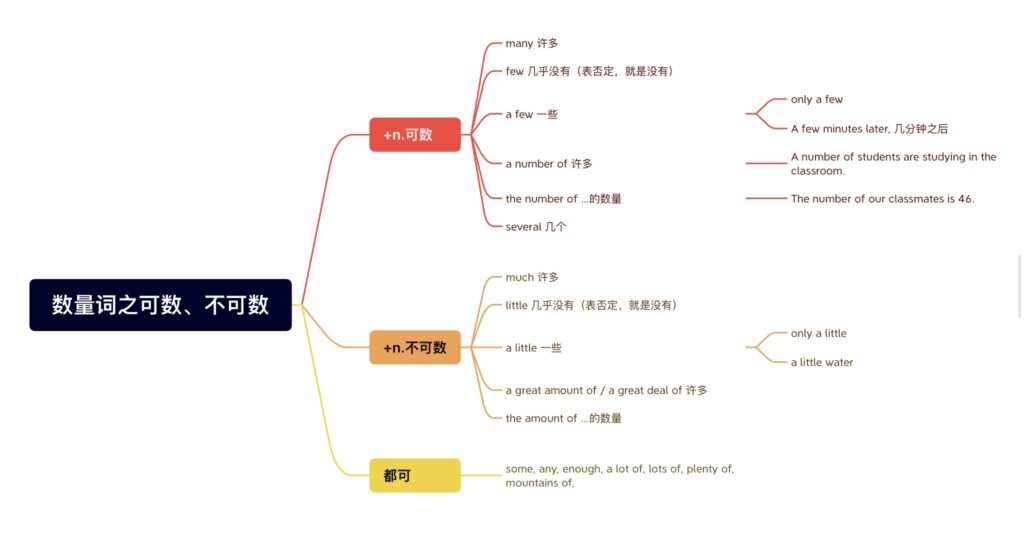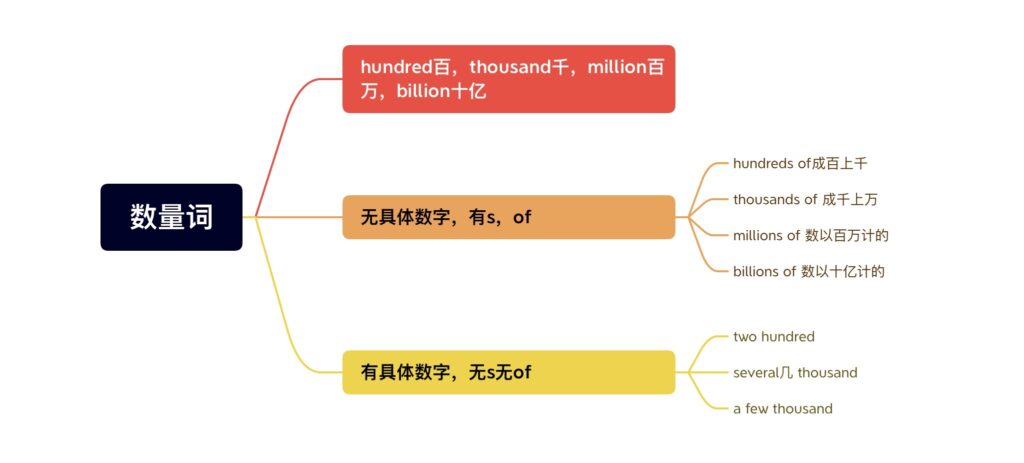数量词作为一个重要的英语语法结构,常用于修饰名词的数量和大小。根据其修饰的名词类型的不同,数量词可以分为三类:修饰可数名词的数量词、修饰不可数名词的数量词、以及既可以修饰可数名词也可以修饰不可数名词的数量词。
只可以修饰可数名词
这些数量词只能用于修饰可数名词,如one, two, three, hundred, thousand, many, a few, few, several等等。
例如:
– I have two books.
– She only has one brother.
– There are a few cats in the garden.
只可以修饰不可数名词
这些数量词只能用于修饰不可数名词,如little, a little, much, a great deal of, a great amount of等等。
例如:
– There is not much sugar left in the jar.
– He has little experience in this field.
需要注意的是,有些名词既可以被当作可数名词使用,也可以被当作不可数名词使用,如cake、cheese、ice cream等等。这时候就需要根据上下文来判断是用可数名词的数量词还是不可数名词的数量词来修饰。
两面派:两者皆可
这些数量词可以用于修饰可数名词和不可数名词,如some, any, a lot of, lots of, both, all, 等等。
例如:
– Do you have any sugar? (不可数名词)
– I have some apples. (可数名词)
– Both my sisters are doctors. (可数名词)
需要注意的是,这些数量词的用法非常灵活,可以用于肯定句、否定句、疑问句等等,但是需要根据上下文来判断其修饰的名词是可数还是不可数。
常见用法与注意事项:
1. 数量词修饰可数名词时,需要注意单复数的变化,例如one book, two books,需要使用相应的主谓一致形式。
2. 修饰不可数名词的数量词有些可以用于肯定句,有些只能用于否定句或疑问句,例如much只能用于肯定句和否定句,而a lot of, plenty of可以用于肯定句、否定句和疑问句。
3. 有些数量词在修饰同一类名词时有一定的互换性,例如some和any可以互换使用,many和several可以互换使用,a few和several可以互换使用等等。
4. 数量词的常用表达方式有很多种,如one hundred, a hundred, hundreds of等等,需要根据不同的语境和句子结构作出选择。
Mindmap 解析


习题-Exercises
Fill in the blanks with the words mentioned above.
1. Could you give me ___________ water?
2. He has ___________ friends in his new school so he doesn’t feel lonely any more.
3. There are ___________ flowers in the vase.
4. I need ___________ information about this project.
5. We have ___________ days off next week.
6. I have ___________ money in my wallet.
7. Do you have ___________ brothers or sisters?
8. ___________ people attended the conference yesterday.
9. She has ___________ cats and ___________ dogs.
10. I need to buy ___________ apples and ___________ oranges.
答案:
1. some
2. many
3. some
4. some
5. a few
6. little
7. any
8. Several
9. two, three
10. some, a few